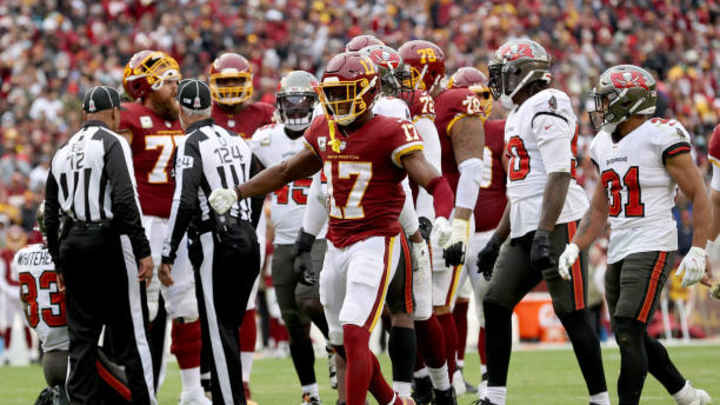Commanders WRs: Really Good, or Really Bad?

Assuming Terry McLaurin's contract situation doesn't result in the star receiver missing actual playing time, quarterback Carson Wentz is entering the 2022 NFL season leading the Washington Commanders with the best set of weapons he's ever had on his side of the ball.
Joining McLaurin are a healthy Curtis Samuel, first-round rookie Jahan Dotson, second-year receiver Dyami Brown, and a host of other contributors like Dax Milne who round out a very solid group.
But is it too early to say this group is a strength for the Commanders this season? Pro Football Focus thinks so.
"Washington’s receiving corps has been Terry McLaurin and not much else over the past several seasons," PFF says. "That has a chance to change in 2022 with a healthy Curtis Samuel and the first-rounder Jahan Dotson in the fold. Dotson is a sudden route-runner who plays bigger than his size with the way he attacks the football in the air. A 5.1% career drop rate doesn’t hurt, either.
The hope for Washington will be that Dotson and Samuel free things up even more for McLaurin, who has already averaged 1.9 receiving yards per route run for his career despite bottom-of-the-league quarterback play."
While we've yet to see McLaurin on the practice field with Wentz and his teammates this offseason, we know the quarterback and receiver are talking often and looking forward to getting to work as soon as possible.
In the meantime, the connection between Wentz and Dotson looks strong, and while Samuel sat out the final OTA practice in front of media on Wednesday as a precaution, he's looking like every bit of what we expected to see in 2021.
Ranking the Washington Commanders receiver group 17th in the NFL might feel low at the time, but being in the tier group labeled "Could Be Strength or Weakness" is a fair place to sit for the time being.
After all, as we learned last season, there could be a big difference between what's expected in the offseason and what happens once the games count.

David Harrison has covered the NFL since 2015 as a digital content creator in both written and audio media. He is the host of Locked On Commanders and a graduate of the Walter Cronkite School of Journalism at Arizona State University. His previous career was as a Military Working Dog Handler for the United States Army. Contact David via email at david.w.harrison82@gmail.com or on Twitter @DHarrison82.
Follow DHarrison82